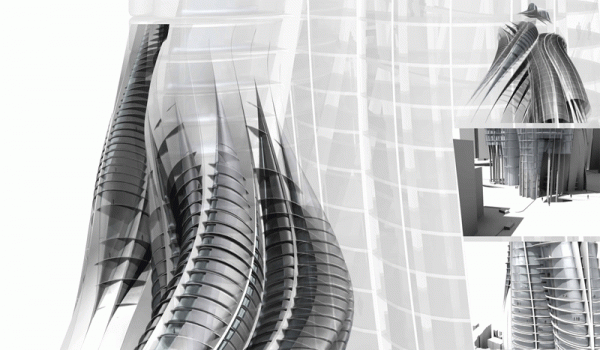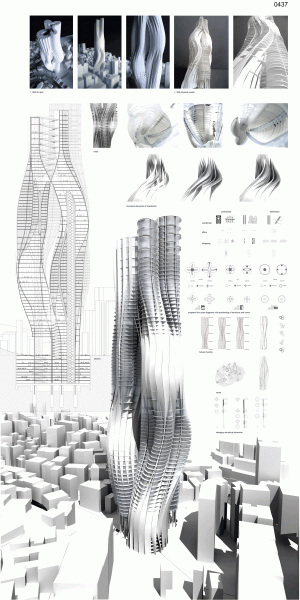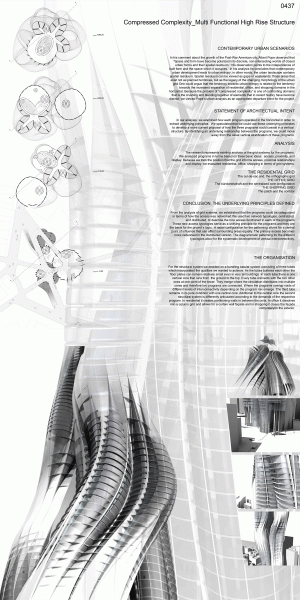Special Mention
2007 Skyscraper Competition
Eldine Heep, Gerhild Orthacker, Judith Schafelner, Elle Przybyla
Austria
Contemporary urban scenarios
The contemporary urban landscape, with its overlay of extensive freeway systems and infrastructures for mobility, can be viewed as an expanse of built form and its spatial residuum. These territories of voids are not planned in so much as they are generated by the changing morphology of the urban grid. Rather than resist or ‘correct’ these entropic tendencies that occur in the horizontal plane, the project seeks to embody them in a vertical, architectural scenario. As an urban model, the multi-functional high rise, with its mix of commercial, office, and residential programs, has the potential to dynamically engage in the spatial complexities that characterize the contemporary urban grid. By moving away from the notion of the fixed skyscraper, a functionally stratified structure that compartmentalizes program into predictable discrete zones, the proposal presents a systematic methodology for programmatic hybridization.
Typologies
Each program was assessed to determine how it operated in the horizontal field, with particular attention to accessibility, proximal relationships, and visibility. Residential, office, and shopping grid configurations can be said to have either a closed or open quality. Borrowing from network theory2, in which systems can be defined as centralized (more closed, based on a single node) or distributed (more open, based on multiple nodes), the programs were assigned network values to describe access.
The development of new program typologies, based on centralized or distributed access, establishes a unifying principle that applies to all programs equally. With their radial organization and focus on pathways, the diagrammatic plans for the different typologies can be recombined and, therefore, allow for the evolutionary development of vertical interconnectivity.
Structure and form
The primary structure, a bundling tubular system, consists of three tubes, each with a central core that runs from ground to top. Where the circulation distributes into multiple cores (resulting from the introduction of a distributed typology), two tubes merge and two programs are connected. In these areas of programmatic overlap, voids with different levels of interconnectivity emerge; this interconnectivity depends on the program mix. Where two tubes merge, the third remains independent with one central core (thus, maintaining its centralized typology). In the tower, each tube connects with the other two at one or more points. Because the tubes buttress each other, the floor plates can remain relatively small, despite the building’s height. The secondary structure, a transformative system, is articulated differently throughout the building, according to programmatic demands.
















